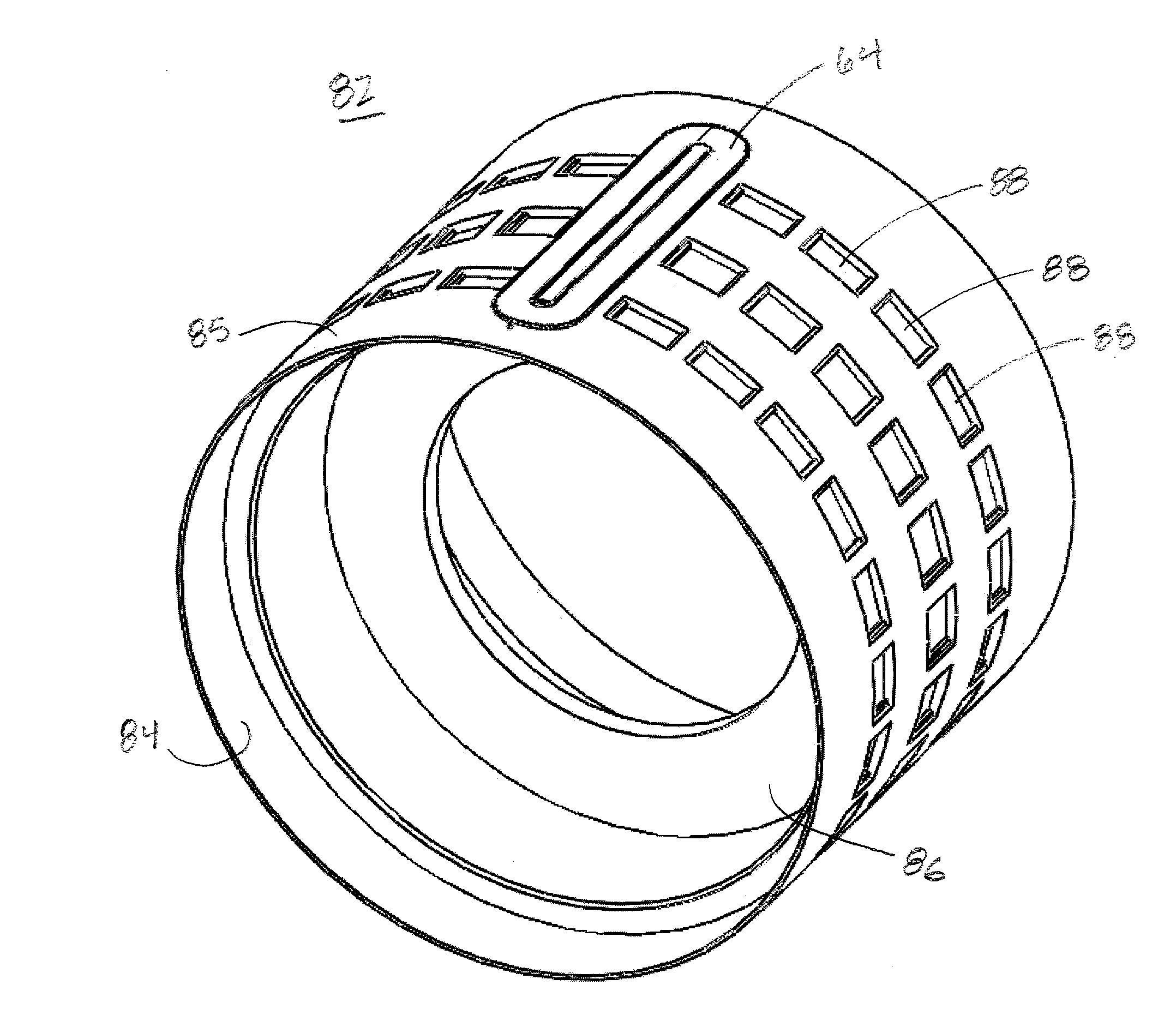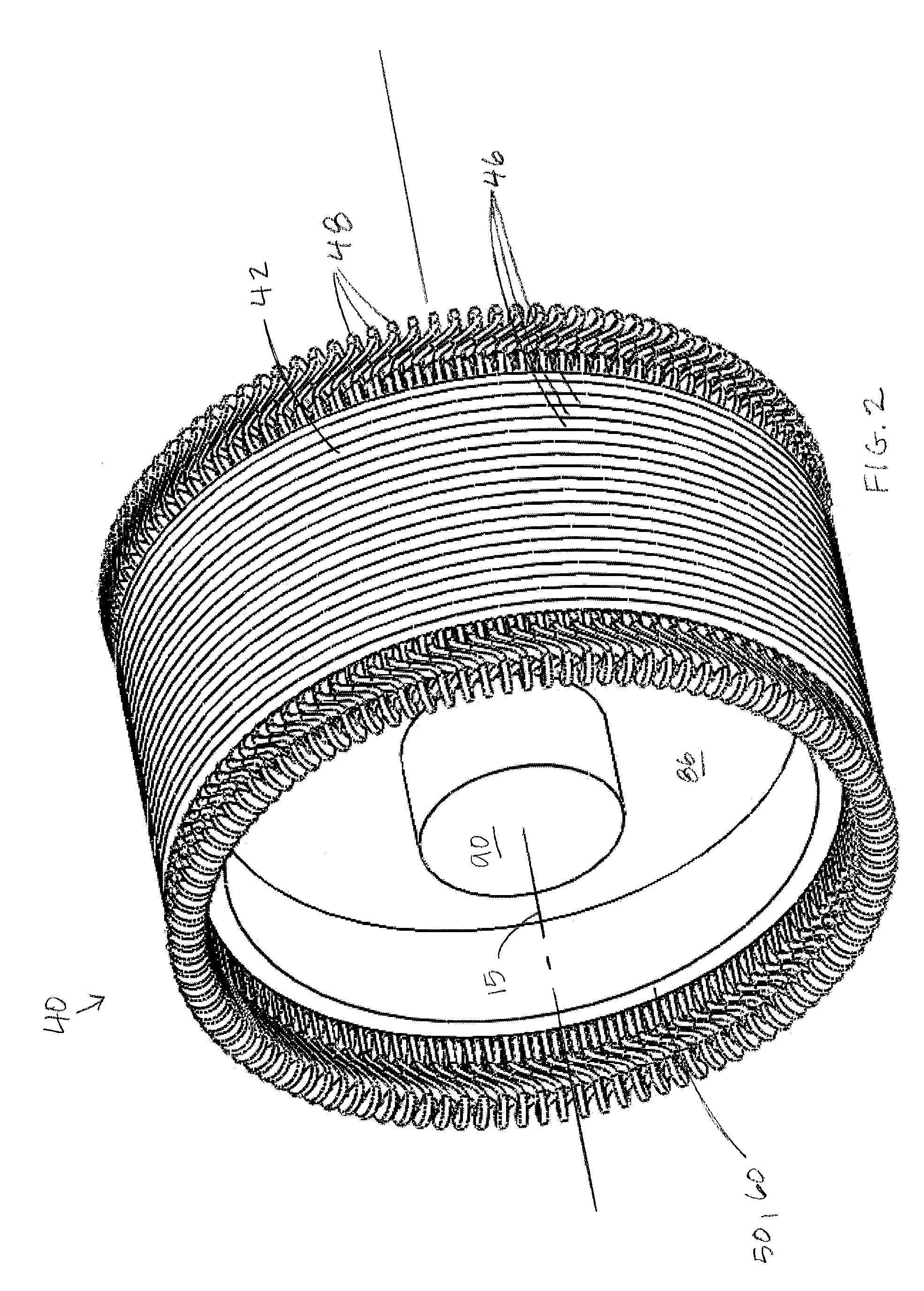Torque support member for rotating electrical machine
a technology of rotating electrical machines and support members, which is applied in the direction of rotating parts of magnetic circuits, superconductor devices, magnetic circuit shapes/forms/construction, etc., can solve the problems of increasing the flux densities of the machines, increasing the magnetomotive force generated by the windings, and the superconducting windings need cryogenic temperatures to operate properly, etc., to improve the reliability of the machine, reduce the overall cost of the generator, and reduce the cost and/or complexity
- Summary
- Abstract
- Description
- Claims
- Application Information
AI Technical Summary
Benefits of technology
Problems solved by technology
Method used
Image
Examples
Embodiment Construction
[0022]Referring now to FIG. 1, generator 10 is a rotating superconducting machine that includes a rotor assembly 60 and a stator assembly 40. As will be described in greater detail below, the rotor assembly 60 is supported within the stator assembly 40 so that the rotor and stator assemblies are coaxial with each other and a longitudinal axis 15 of the generator 10.
[0023]Referring to FIG. 2, the stator assembly 40 includes a stator core 42 and stator windings 48 supported within the stator core 42. The stator core 42 is a hollow cylindrical body that is an assembly of laminated annular ferromagnetic plates 46. The stator windings are formed of transposed wire cables (not shown), in which the individual copper wire conductors (not shown) are twisted and / or woven to form a pattern which reduces conduction losses. The transposed cables may include Litz wire, Rutherford wire, Robel wire, or any other suitable transposed wire. The transposed cables are wound around an axis transverse to ...
PUM
 Login to View More
Login to View More Abstract
Description
Claims
Application Information
 Login to View More
Login to View More - R&D
- Intellectual Property
- Life Sciences
- Materials
- Tech Scout
- Unparalleled Data Quality
- Higher Quality Content
- 60% Fewer Hallucinations
Browse by: Latest US Patents, China's latest patents, Technical Efficacy Thesaurus, Application Domain, Technology Topic, Popular Technical Reports.
© 2025 PatSnap. All rights reserved.Legal|Privacy policy|Modern Slavery Act Transparency Statement|Sitemap|About US| Contact US: help@patsnap.com



